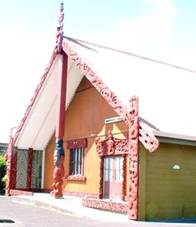18.1 Introduction
 This tangata whenua chapter differs from other chapters of the SOE report, in that it is not an environment like air, coastal or land and not a pressure like waste management or transportation. This section is focused on the importance of and connection to te ao turoa (the natural environment) of tangata whenua and how tangata whenua are involved with the management of nga taonga tuku iho o nga tupuna (treasures handed down by our ancestors), the natural and physical resources in Northland.
This tangata whenua chapter differs from other chapters of the SOE report, in that it is not an environment like air, coastal or land and not a pressure like waste management or transportation. This section is focused on the importance of and connection to te ao turoa (the natural environment) of tangata whenua and how tangata whenua are involved with the management of nga taonga tuku iho o nga tupuna (treasures handed down by our ancestors), the natural and physical resources in Northland.
Northland is rich in heritage and history which bonds both Maori and non-Maori people together. Some of the oldest traces of Maori are found in Northland. The great explorer Kupe, who many iwi trace their lineage too, is said to have first set foot in New Zealand on the shores of the Hokianga Harbour. Many Maori believe that Kupe gave birth to the nation we know today.
The late eighteenth century saw the arrival of Europeans. The first contact was from exploration voyagers and then came traders and whalers. This was closely followed by the arrival of missionaries.
Although many nations travelled to New Zealand, Maori entered into a relationship with Britain. In 1832 James Busby was appointed British Resident in New Zealand by the Governor of New South Wales. This was the first step in brining Maori into a formal relationship with Britain. It was Busby who hosted the signing of the Treaty of Waitangi in 1840.
Treaty of Waitangi
Today the Treaty of Waitangi has been interwoven into a variety of legislation, including the Resource Management Act 1991 (RMA). It is the RMA that requires regional councils to:
· Take into account the principles of the Treaty of Waitangi
· Recognise and provide for the relationship of Maori and their culture and traditions with their ancestral lands, water, sites, waahi tapu, and other taonga.
· Have particular regard to kaitiakitanga (guardianship)
After the enactment of the RMA, the Northland Regional Council formed a relationship with Te Kotahitanga o Te Tai Tokerau, a pan tribal group with membership from the major iwi of Northland. The group was responsible for policy advice during the initial draft stage of the regional plans.
This enabled the Council to have some form of robust input from Maori at the early stages of the regional plan development especially the Regional Policy Statement, as the main mechanism for achieving recognition of "the relationship of Maori and their culture and traditions with their ancestral lands, water, sites, waahi tapu and other taonga."
In recognition of the partnership principles in the Treaty of Waitangi, tangata whenua are expected to have a key role in resource management. This may be through consultation, education, or monitoring and investigations associated with policy implementation. The status of tangata whenua as a Treaty partner with the Crown, distinct from other interest groups and members of the public, is recognised and Maori Kaupapa have been included in appropriate parts of the Regional Policy Statement for Northland (NRC 2002).
Regional Policy Statement objectives
The Regional Policy Statement (RPS) for Northland contains the following objective in section 14: Involvement of tangata whenua:
· Involvement of tangata whenua in the management of the natural and physical resources of the region in a manner that recognises and respects tangata whenua and ahi kaa as kaitiaki o nga taonga tuku iho (guardians of the treasures of their ancestors, as handed down).
The objective under section 24: Heritage Protection of the Regional Policy Statement also relates to tangata whenua involvement and cultural significance. This objective is:
· Protection and where possible, enhancement of the cultural, historic and amenity values of heritage features.
Issues relating to Tangata Whenua involvement
The following are the significant issues relating to Tangata Whenua involvement in resource management identified in the RPS (NRC 2002):
· Recognition of:
o Tangata Whenua
o Ahi kaa
o Tikanga Maori
o Tino rangatiratanga
o Kaitiakitanga.
· The historical lack of involvement of Tangata Whenua and Ahi Kaa in resource management decision making, resource consent applications, policy formulation, monitoring and implementation, particularly as they affect their taonga.
· The lack of recognition of tikanga maori in current plans and policy, i.e. management in accordance with tribal cultural and spiritual preferences.
· Inappropriate or lack of consultation with Tangata Whenua and Ahi Kaa.
· Tangata Whenua and Ahi Kaa wish to determine what is appropriate management of their taonga.
Further issues relating to Tangata Whenua involvement in resource management in Northland include:
· Development intensification, subdivisions and redevelopment have increased rapidly in Northland putting pressure on taonga.
· As a whole, Northland remains a relatively economically deprived region.
· The difference in boundaries between Council and iwi. For example the rohe (area of interest) for Ngatiwai and Ngati Whatua sits across two different regions, with multiple districts. At any one time up to seven different councils may approach iwi with regards to resource management and local government issues.
· Differing interpretations (between councils and between Council and Maori) of the Maori terms contained within sections 6, 7 and 8 of the RMA.
